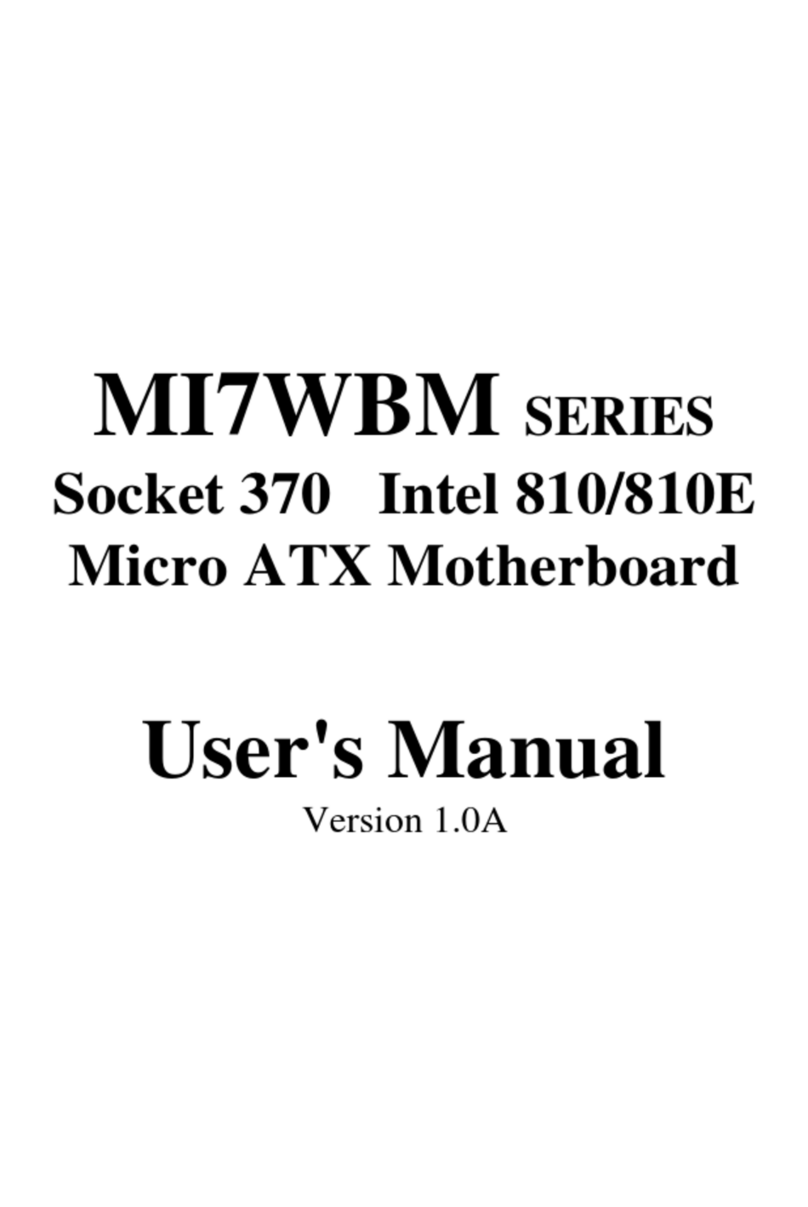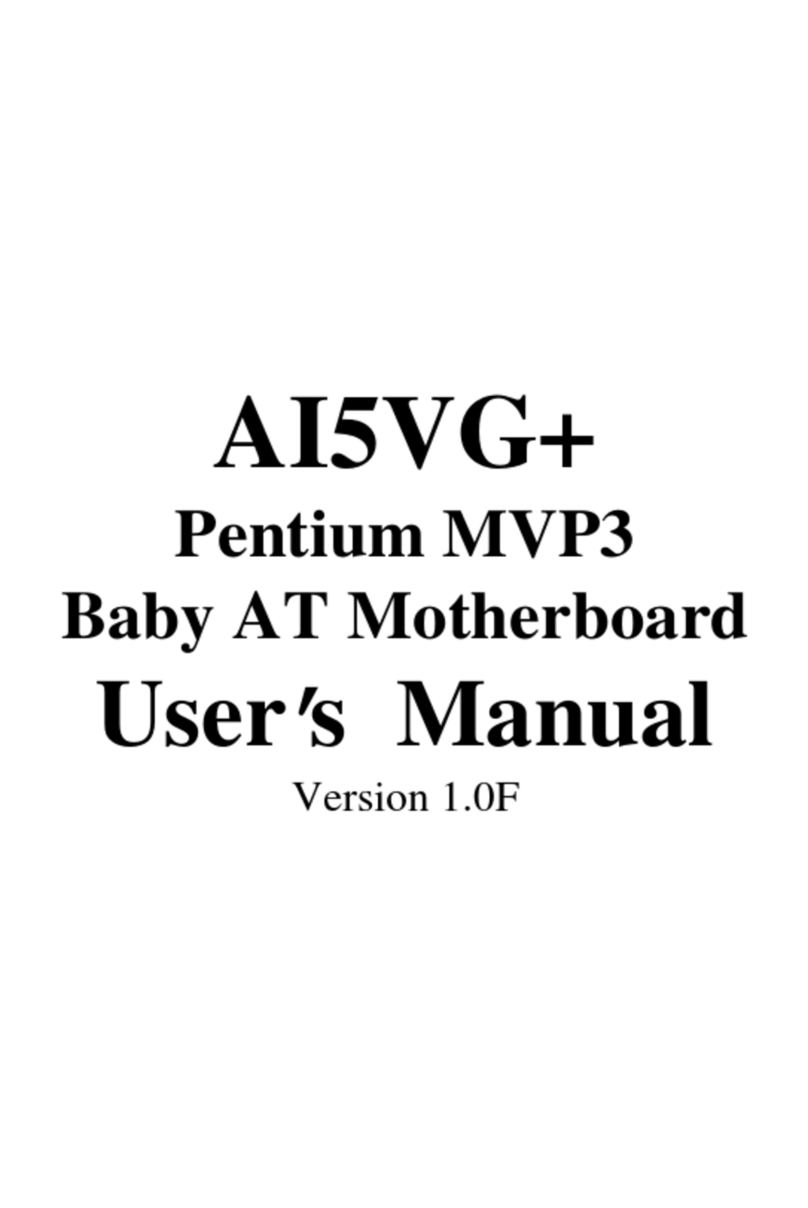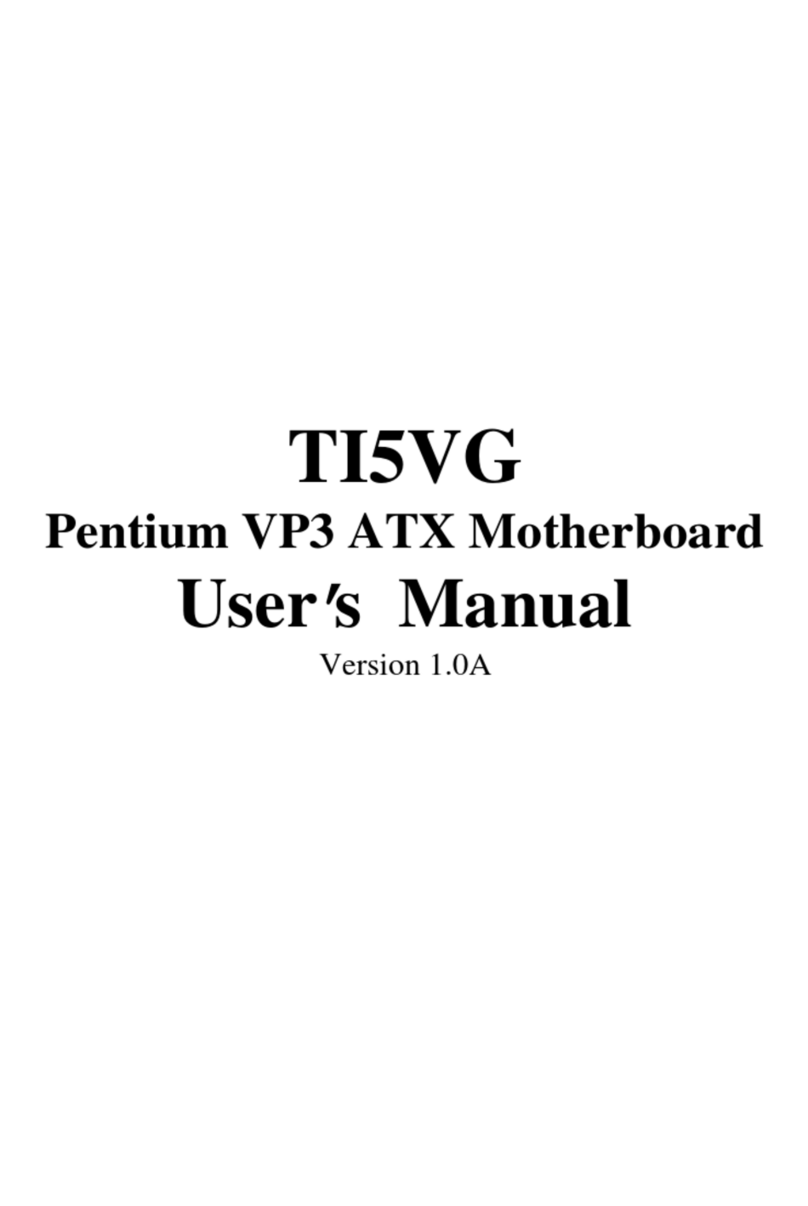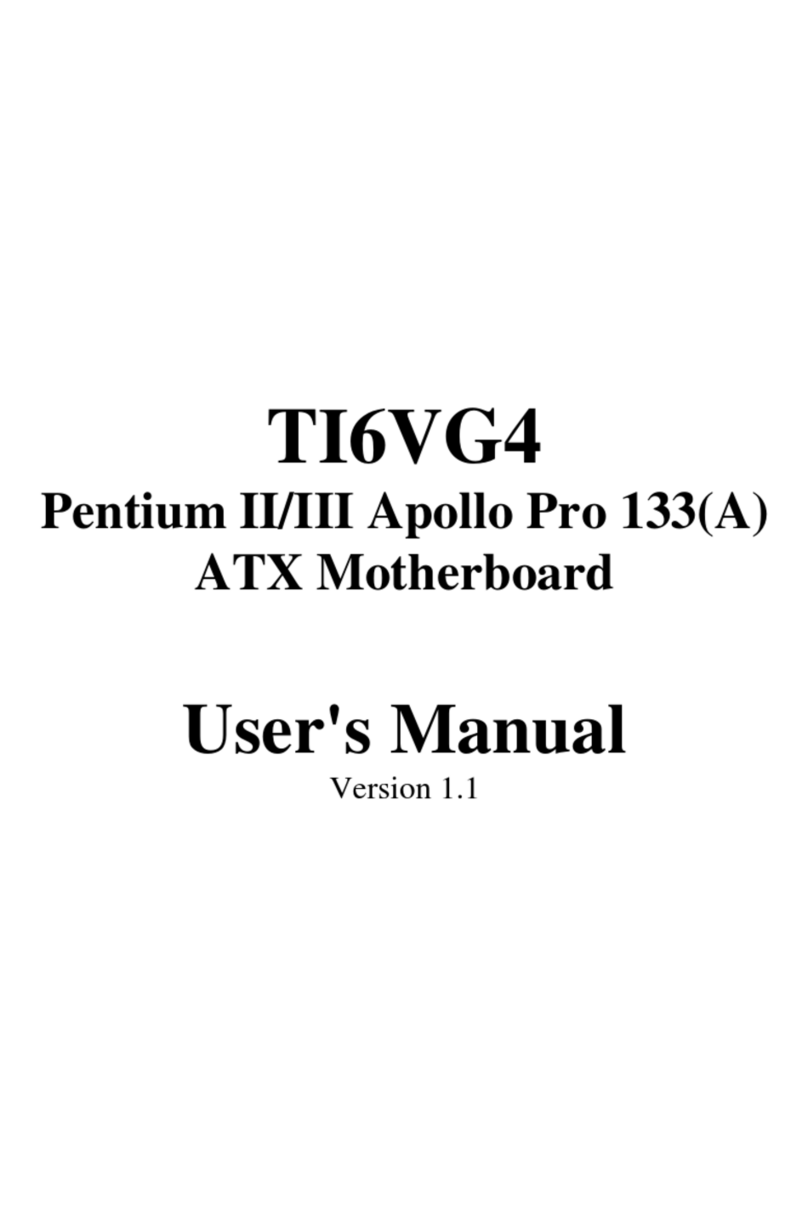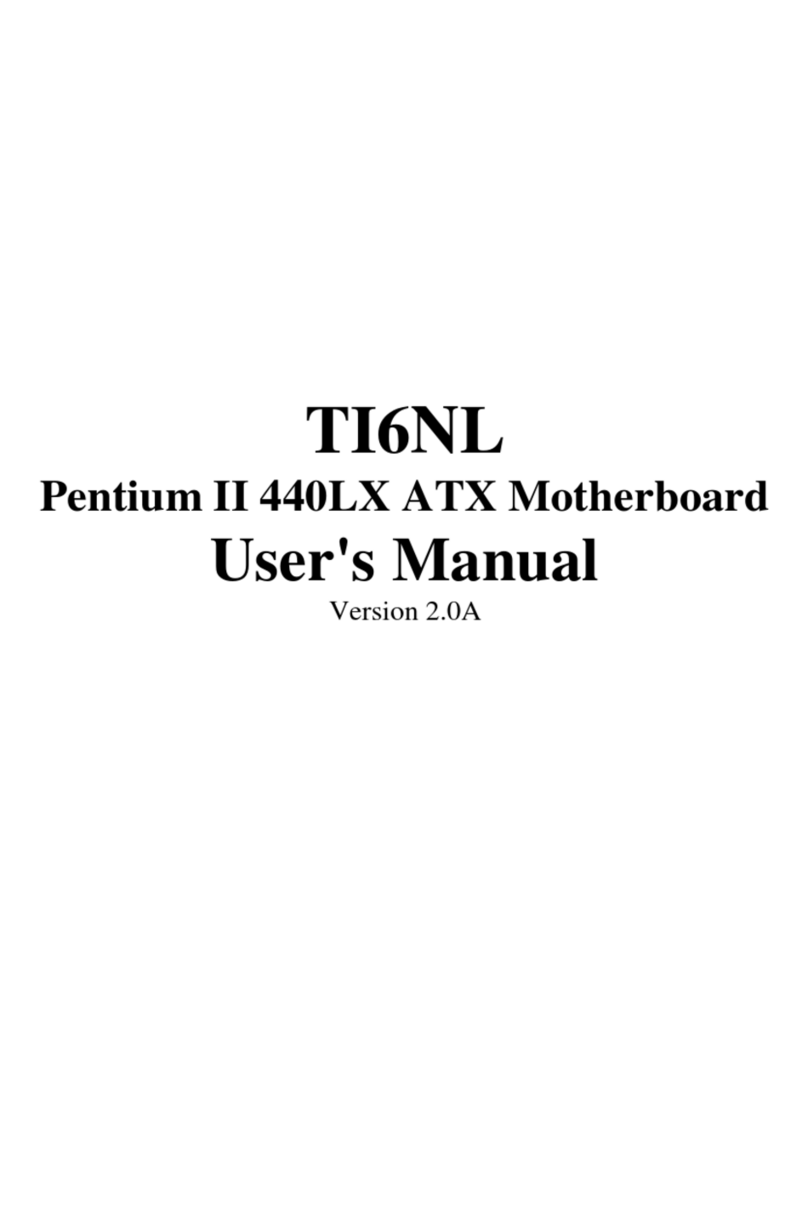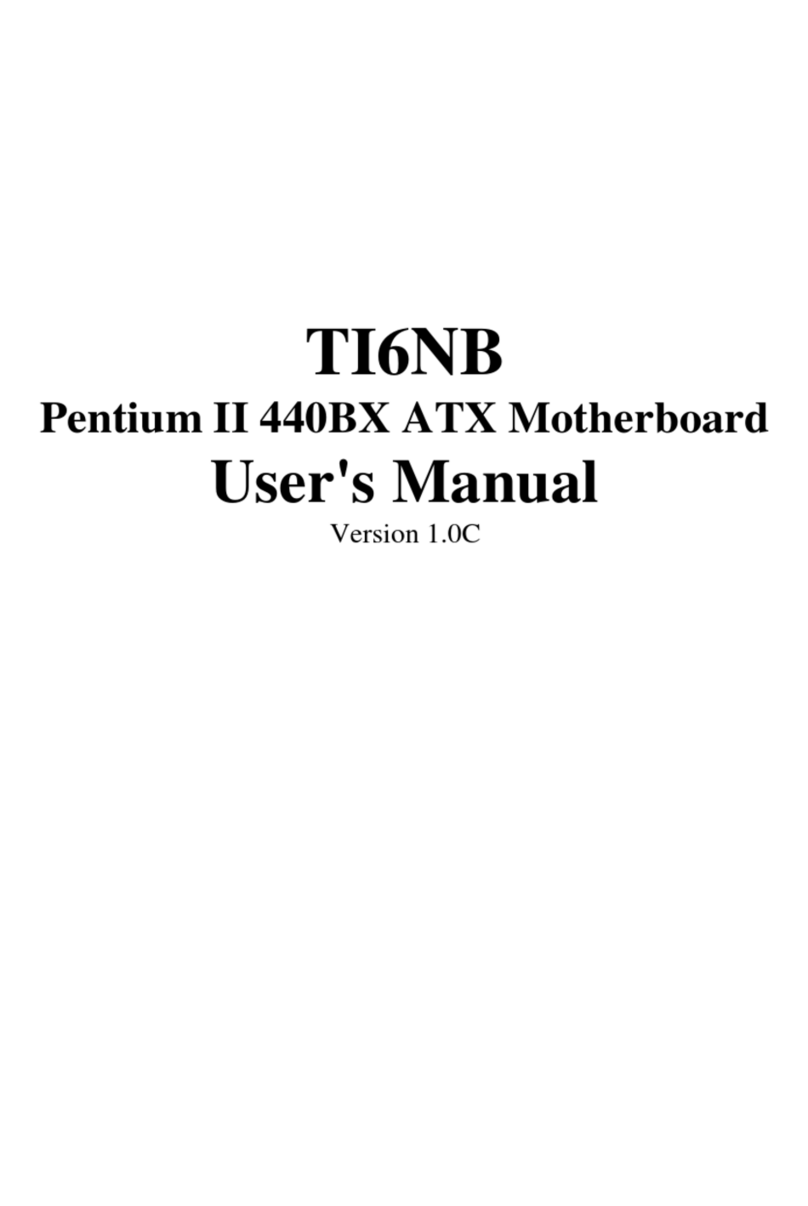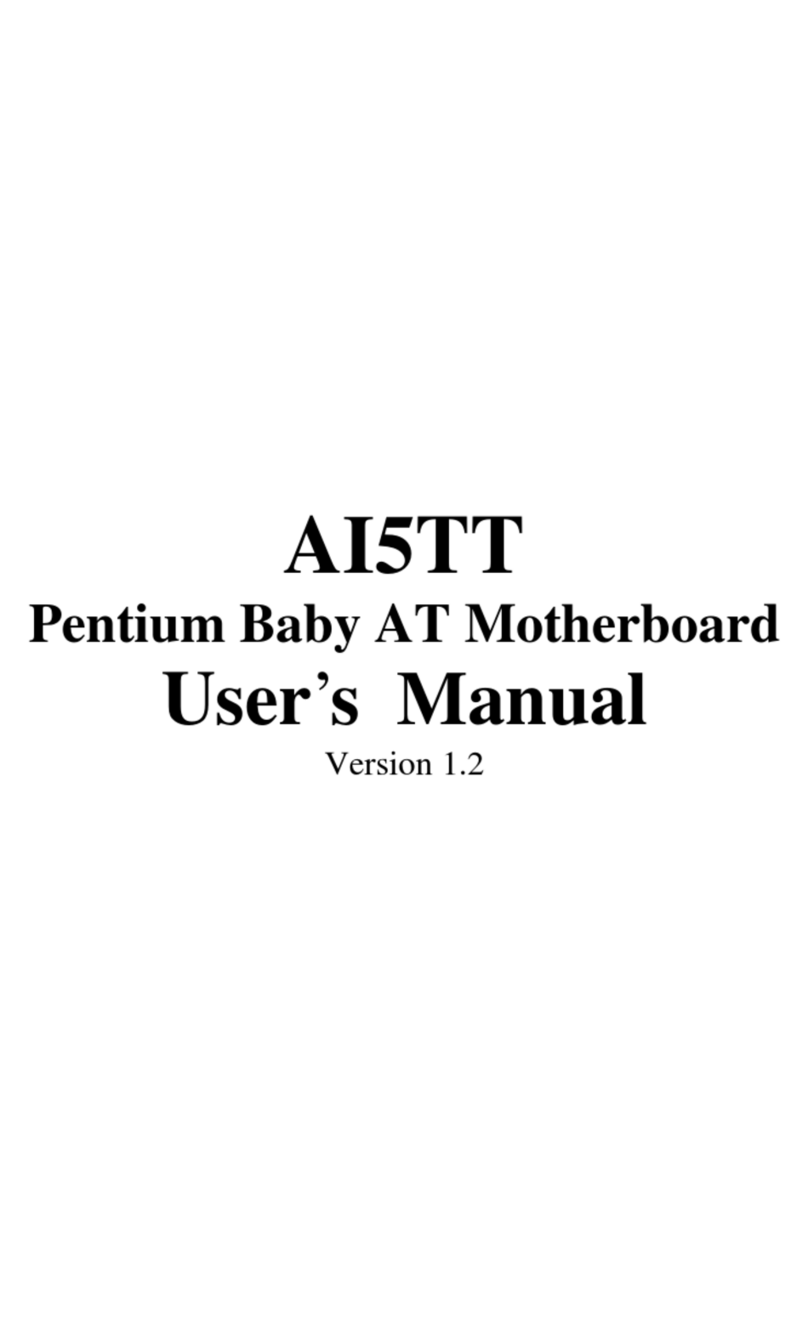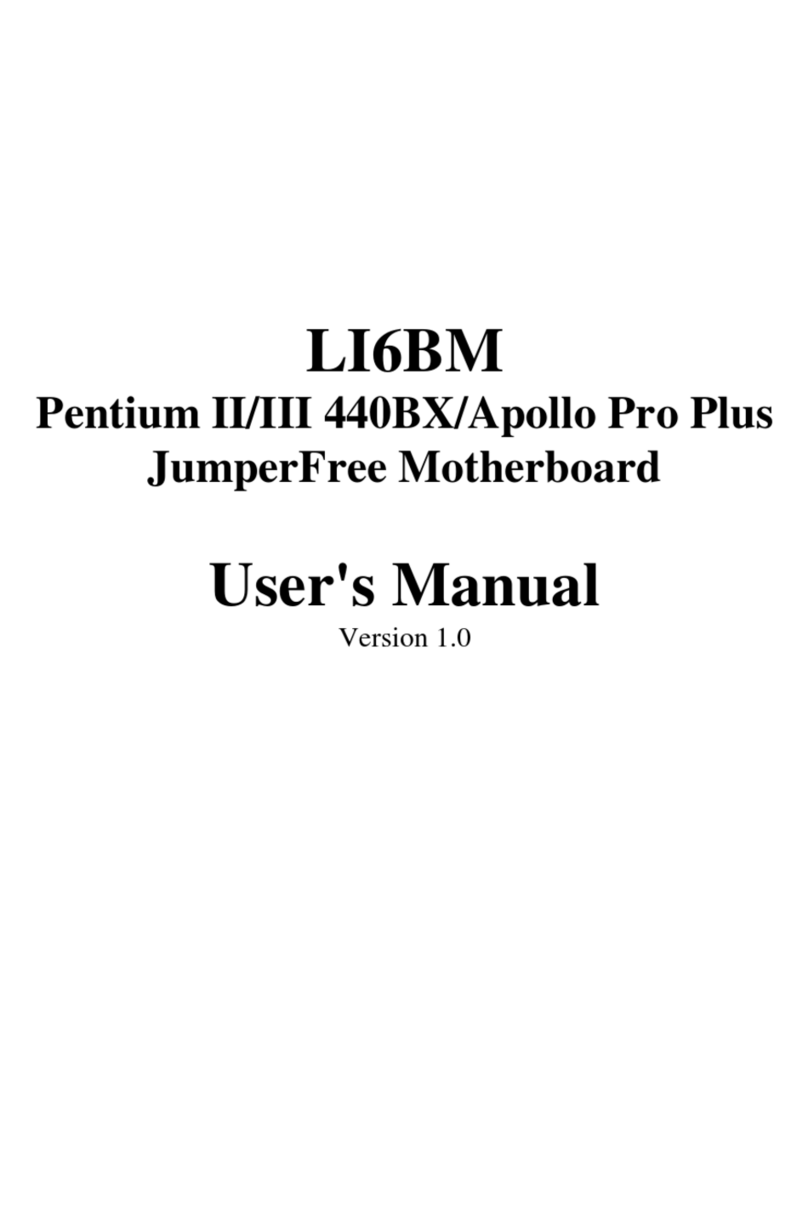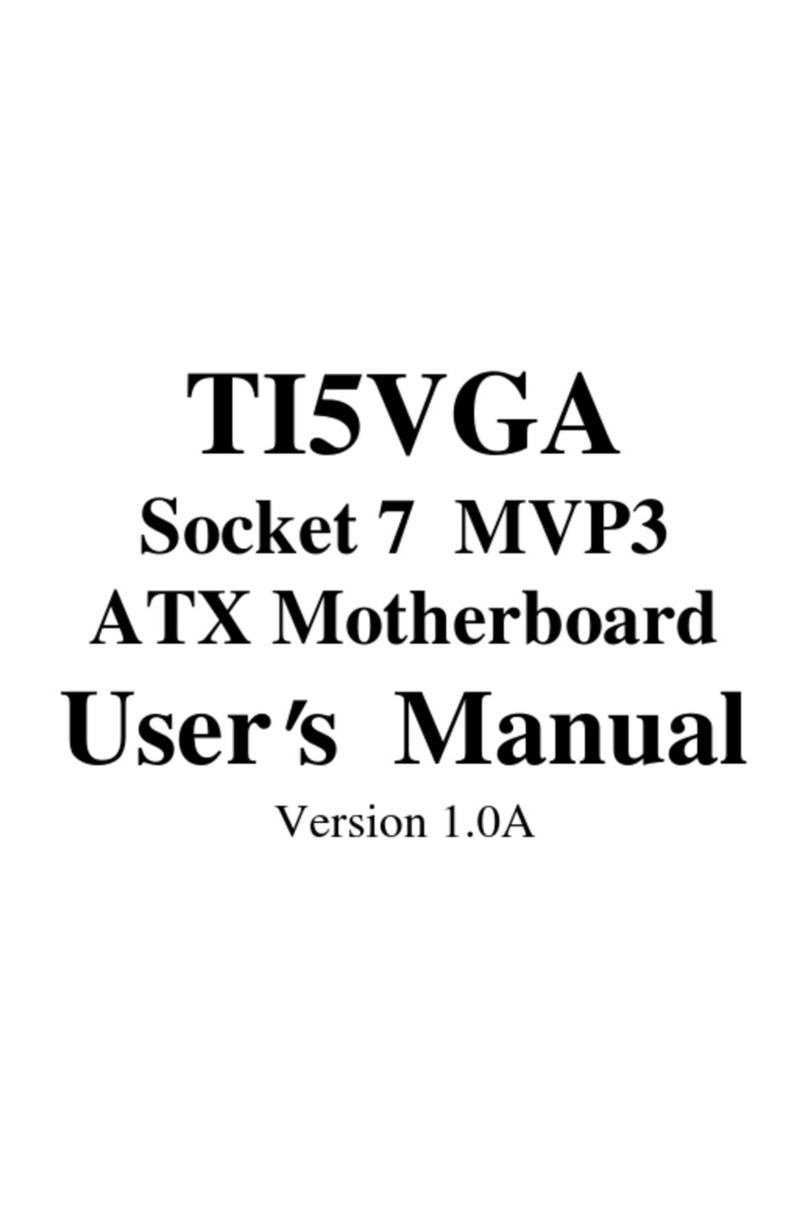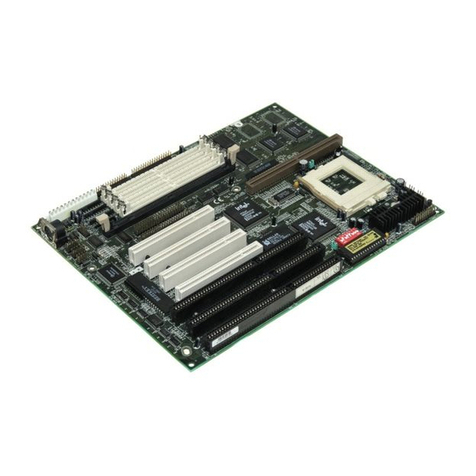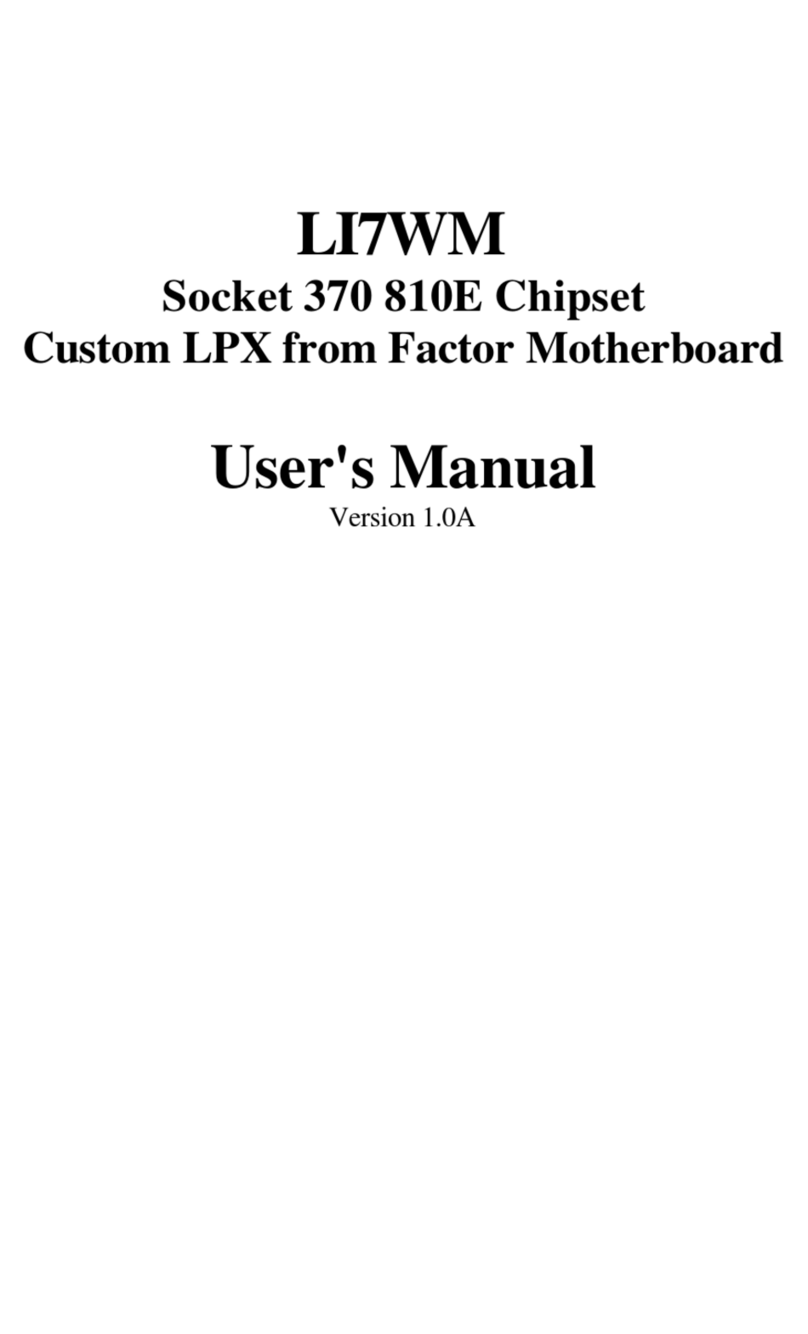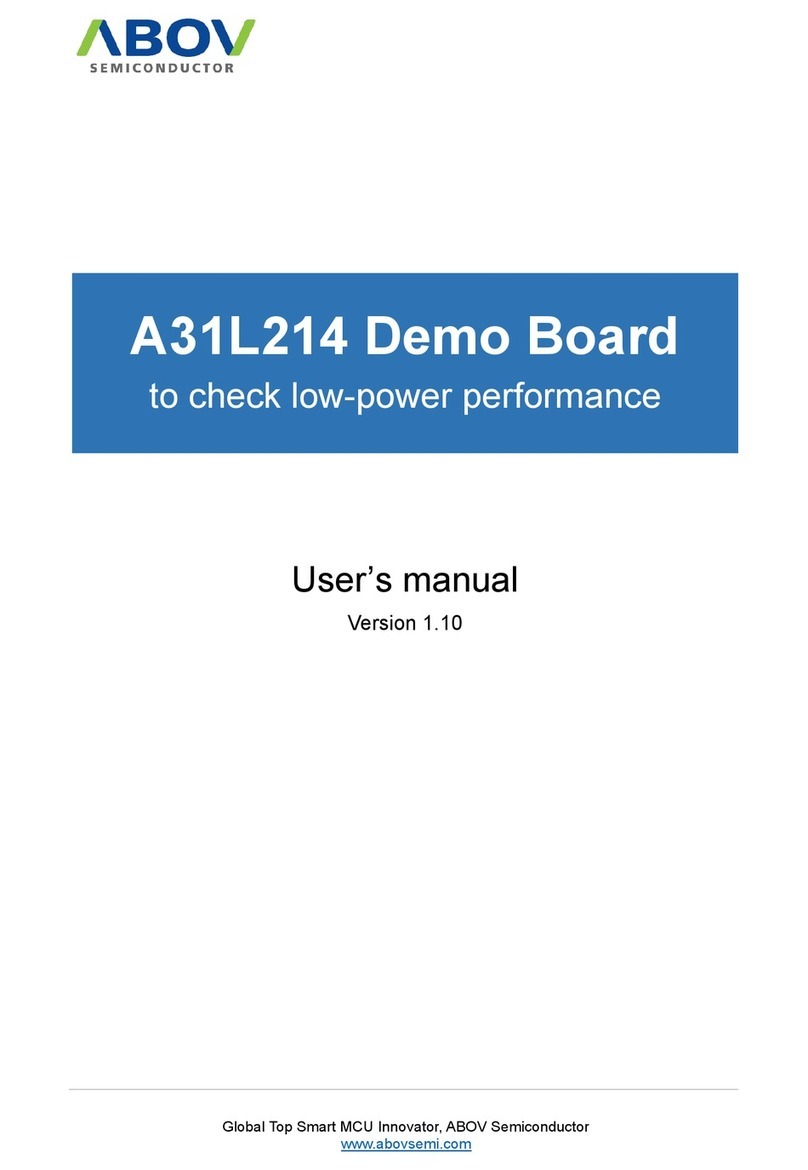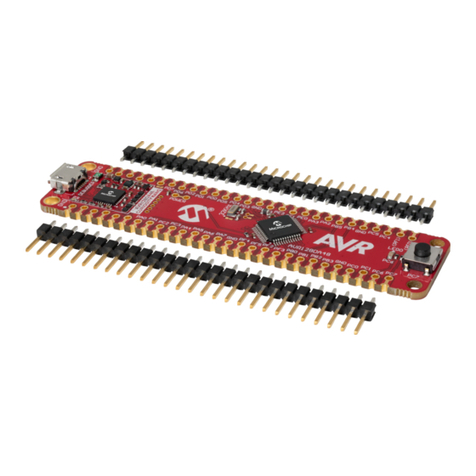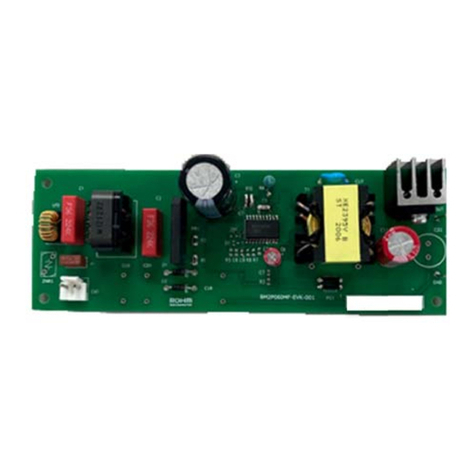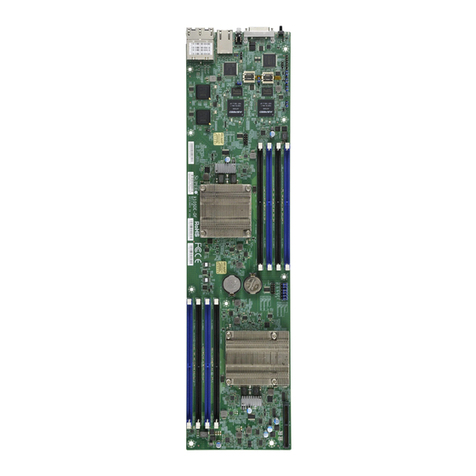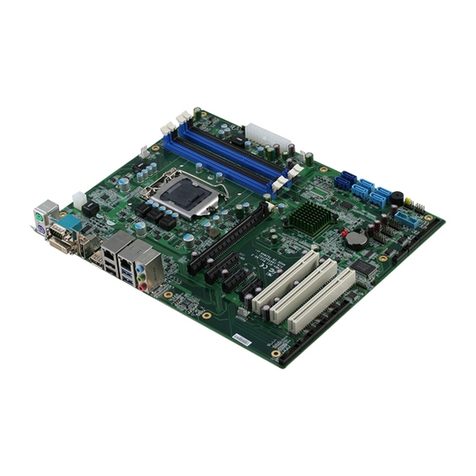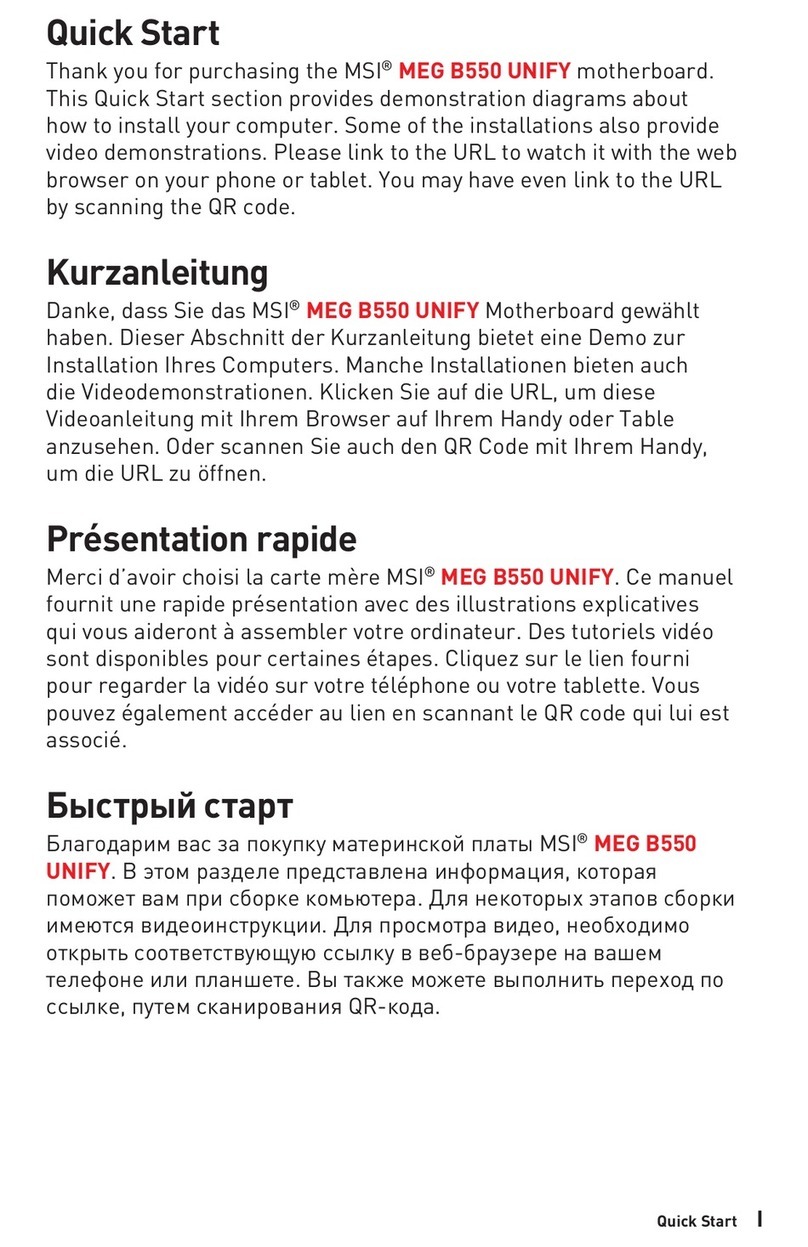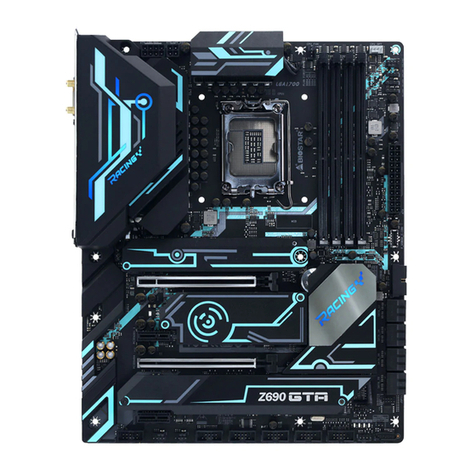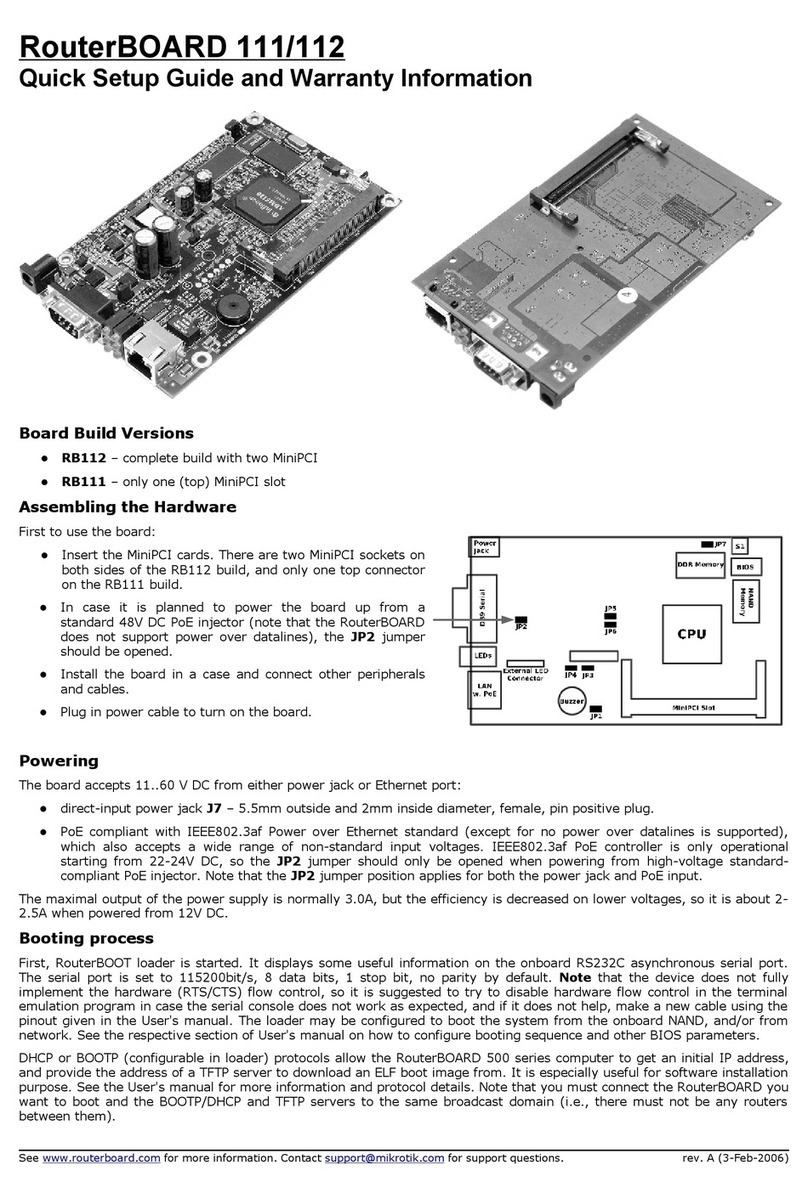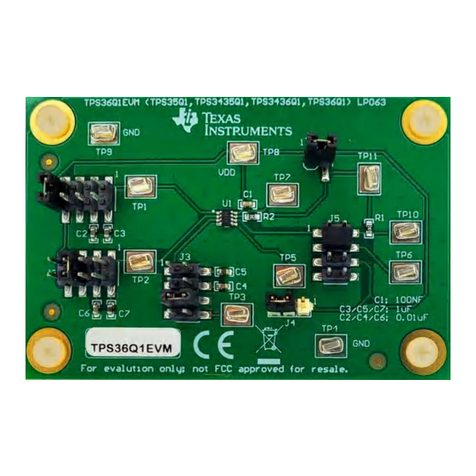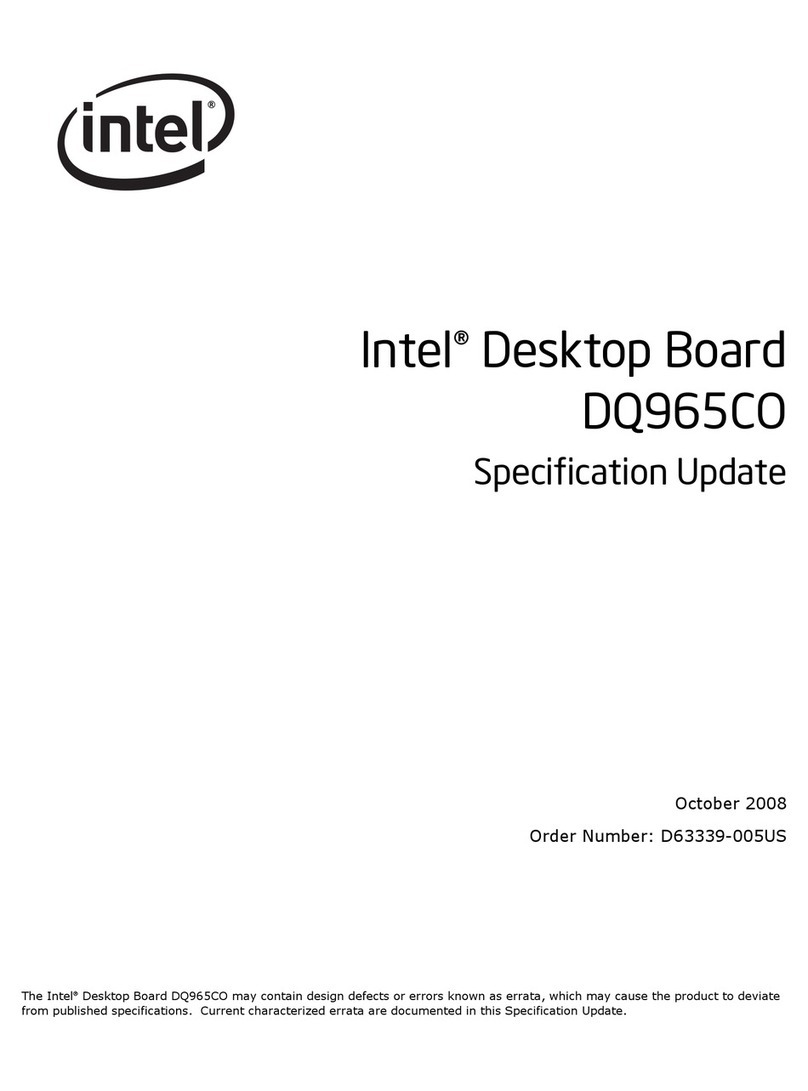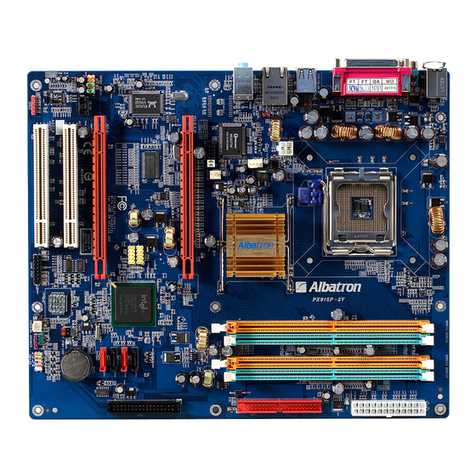TMC TI7NBF User manual

TI7NBF
Socket 370 ATX Motherboard
User's Manual
Version 1.0A

ii TI7NBF Socket 370 ATX Motherboard User’s Manual
The brand names, product names and trade names in this manual
are trademarks or registered trademarks of their respective
holders.
This publication is protected by copyright and all rights are
reserved. No part of it may be reproduced or transmitted by any
means or in any form, without prior consent in writing from the
manufacturer.
The information in this document has been carefully checked and
is believed to be accurate. However, the manufacturer assumes
no responsibility for any inaccuracies that may appear in this
manual. In no event will the manufacturer be liable for direct,
indirect, special, exemplary, incidental or consequential damages
resulting from any defect or omission in this manual, even if
advised of the possibility of such damages. The material contained
herein is for informational purposes only.

TI7NBF Socket 370 ATX Motherboard User’s Manual iii
README FIRST
If your motherboard has a VIA 82C693 (Apollo Pro Plus)
chipset, please do the following.
1. For Windows 95.
a. Install Windows 95 OSR2 or later version.
b. Install USB supplement to OSR2. You may download
the supplement from Microsoft’s web site.
c. Install VIA VXD Driver (VIA_GART table driver) V2.6 or
later version. The driver can be found in the enclosed
CD. Refer to the following figure.
d. Install the VGA driver as supplied by the VGA vendor.
e. Install the VIA IDE driver version V2.1.26 or later
version from the enclosed CD.
2. For Windows 98
a. Install the VIA Chipset Functions’ Registry Driver V1.1
or later version. It is imperative that this driver is
installed first, even if you don’t have an AGP card in your
system.
b. Install the VIA VXD Driver (VIA_GART table driver) V2.6
or later version. The driver can be found in the enclosed
CD.
c. Install the VGA driver as supplied by the VGA vendor.
d. Install the VIA IDE driver version V2.1.26 or later
version. The driver can be found in the enclosed CD.

iv TI7NBF Socket 370 ATX Motherboard User’s Manual
This page was intentionally left blank.

Contents
TI7NBF Socket 370 ATX Motherboard User’s Manual v
Contents
Chapter 1 Introduction....................................................1
Chapter 2 Specifications..................................................3
Chapter 3 Hardware Description ...................................5
3.1 Processor ...................................................................................7
3.2 L2 Cache ...................................................................................7
3.3 Main Memory............................................................................7
3.4 BIOS..........................................................................................8
3.5 I/O Port Address Map................................................................8
3.6 DMA Channels..........................................................................9
3.7 Interrupt Request (IRQ) Lines...................................................9
3.8 Onboard PCI-IDE......................................................................9
3.9 Onboard Multi-I/O ..................................................................10
3.10 Onboard AGP Slot.................................................................10
3.11 Hardware Monitoring IC.......................................................10
3.12 Onboard Audio......................................................................10
Chapter 4 Configuring the Motherboard ....................11
4.1 CPU Frequency/Speed Setting ................................................13
4.2 Bus Speed Select: JP8 .............................................................13
4.3 Clear CMOS Select: JP10 .......................................................14
4.4 CPU Select: JP13, JP15, JP20, JP22.......................................14
Chapter 5 Installation....................................................15
5.1 I/O Connectors ........................................................................17
5.2 JP1: PS/2 Keyboard and PS/2 Mouse Connectors...................17
5.3 J1, J2: Serial Ports...................................................................18
5.4 J4: Parallel Port Connector......................................................18
5.5 P1: Line Out/Line In/ Microphone, Game Port.......................19
5.6 JP3: IrDA Connector...............................................................19
5.7 JP5, JP6: CD-ROM Audio In Connectors...............................19
5.8 JP7: Wake on LAN Connector................................................20
5.9 J7: CPU Fan Power Connector................................................20
5.10 J13: Chassis Fan Power Connector........................................20
5.11 J19: AGP Fan Power Connector............................................20
5.12 J14: ATX Power Supply Connector......................................21
5.13 J16: Floppy Drive Connector ................................................21

Contents
vi TI7NBF Socket 370 ATX Motherboard User’s Manual
5.14 J17, J15: EIDE Connectors....................................................22
5.15 J18: Front Bezel Connectors..................................................23
Chapter 6 BIOS and System Setup...............................27
6.1 BIOS Introduction ...................................................................30
6.2 BIOS Setup..............................................................................30
6.3 Standard CMOS Setup.............................................................32
6.4 BIOS Features Setup................................................................35
6.5 Chipset Features Setup.............................................................39
6.6 Power Management Setup .......................................................43
6.7 PNP/PCI Configuration...........................................................47
6.8 Load BIOS Defaults ................................................................50
6.9 Load Setup Defaults.................................................................50
6.10 CPU Speed Setting ................................................................51
6.11 Integrated Peripherals............................................................53
6.12 Supervisor / User Password...................................................56
6.13 IDE HDD Auto Detection......................................................57
6.14 Save & Exit Setup..................................................................58
6.15 Exit Without Saving...............................................................58
Chapter 7 Audio Driver Installation Guide.................59
Chapter 8 System Monitor Utility User’s Guide.........67
.

Chapter 1 Introduction
TI7NBF Socket 370 ATX Motherboard User’s Manual 1
Chapter 1 Introduction
This manual is designed to give you information on the TI7NBF
motherboard. It is divided into the following sections:
•
••
•
Introduction
•
••
•
Specifications
•
••
•
Hardware Description
•
••
•
Configuring the Motherboard
•
••
•
Installation
•
••
•
BIOS and System Setup
•
••
•
Audio Driver Installation Guide
•
••
•
System Monitor Utility User’s Guide
Checklist
Please check that your package is complete and contains the items below.
If you discover damaged or missing items, please contact your dealer.
•
••
•
The TI7NBF Motherboard
•
••
•
1 IDE ribbon cable
•
••
•
1 floppy ribbon cable
•
••
•
1 CD containing System Monitor utility, PIIX4 Bus Master IDE
driver and utilities. The Intel LANDesk Client Manager
software is optional.

Chapter 1 Introduction
2 TI7NBF Socket 370 ATX Motherboard User’s Manual
This page was intentionally left blank.

Chapter 2 Specifications
TI7NBF Socket 370 ATX Motherboard User’s Manual 3
Chapter 2 Specifications
The TI7NBF is a high-performance ATX motherboard with a Socket 370
connector for PPGA 370-type Intel Celeron/Coppermine and Cyrix III
processors. It offers flexibility in terms of CPU frequency and main
memory type and size. The main features of the motherboard consist of
the following:
CPU Socket
Socket 370
Processor
Intel Celeron / Coppermine, Cyrix III
300MHz~600MHz (or higher when available)
Bus Speed
66~150MHz
L2 Cache
CPU integrated L2 cache
CPU Voltage
Switching voltage regulator on board supporting multiple voltage
ranging 1.3V-2.0V (1.3V~3.5V when JP20 jumper is OPEN.)
Main Memory
Three 168-pin DIMM sockets
NOTE: For 440ZX chipset-based motherboard, there are only two
DIMM memory sockets.
Memory types: SDRAM (Synchronous DRAM)
Chipset
Intel 82440BX /ZX or VIA 82C693 with built-in PCI-IDE
Onboard Audio
The onboard audio consists of the Creative ES1373 Chip + AC97.
With a PCI Bus Mastering interface with DOS compatibility, it
supports 32 voices wavetable, surround sound, 3D audio, and audio
effects such as reverb and chorus. Creative ES1373 uses single,
shareable PCI interrupt and is PC97/PC98 compliant.
BIOS
Y2K compliant Award BIOS featuring ISA PnP extension, DMI,
bootable CD-ROM and power-management features
Power Connector
ATX power supply connector (Use an ATX power supply with 3.3V
power.)

Chapter 2 Specifications
4 TI7NBF Socket 370 ATX Motherboard User’s Manual
DMI BIOS Support
Desktop Management Interface (DMI) allows users to download
system hardware-level information such as CPU type, CPU speed,
internal/external frequencies and memory size.
PCI Bus Master IDE Controller (Ultra DMA/33)
Onboard PCI Bus Master IDE (Ultra DMA/33) controller with two
connectors for up to four IDE devices in two channels, supporting
enhanced IDE devices such as Tape Backup and CD-ROM drives,
PIO Mode 3/4 and Bus Mastering Ultra DMA/33 (You have to install
the Bus Master IDE driver to enable this feature.)
Super I/O
Onboard super I/O is a Winbond W83977TF that provides:
z
Two 16550 UART compatible serial ports
z
One parallel port (ECP/EPP compatible)
z
One floppy controller (2.88MB compatible)
z
One IrDA port
z
Keyboard Controller
Keyboard and Mouse Connectors
PS/2 type
USB Connector
2 ports onboard
Win95/98 shut-off
Allows shut-off control from within Windows 95
Modem-ring-on
Supports PC powering on through an external modem.
Onboard AGP Slot
The AGP (Accelerated Graphics Port) slot supports AGP compliant
VGA cards to achieve rich 3D and video graphics display. AGP is a
bus specification that enables 3D graphics capabilities including
support for z-buffering, alpha blending and faster texture mapping.
Expansion Slots
Five PCI 32-bit slots
One ISA 16-bit slots
One AGP slot
Form Factor
ATX, 12.05” x 7.09” (30.6cm x 18cm)

Chapter 3 Hardware Description
TI7NBF Socket 370 ATX Motherboard User’s Manual 5
Chapter 3 Hardware Description
This chapter briefly describes each of the major features of the TI7NBF
motherboard. The layout of the board in Figure 1 shows the location of
the key components. The topics covered in this chapter are as follows:
3.1 Processor ...................................................................................7
3.2 L2 Cache ...................................................................................7
3.3 Main Memory............................................................................7
3.4 BIOS..........................................................................................8
3.5 I/O Port Address Map................................................................8
3.6 DMA Channels..........................................................................9
3.7 Interrupt Request (IRQ) Lines...................................................9
3.8 Onboard PCI-IDE......................................................................9
3.9 Onboard Multi-I/O ..................................................................10
3.10 Onboard AGP Slot.................................................................10
3.11 Hardware Monitoring IC ........................................................10
3.12 Onboard Audio......................................................................10

Chapter 3 Hardware Description
6 TI7NBF Socket 370 ATX Motherboard User’s Manual
Figure 1: Layout of the TI7NBF Motherboard

Chapter 3 Hardware Description
TI7NBF Socket 370 ATX Motherboard User’s Manual 7
3.1 Processor
The TI7NBF motherboard is designed to take an Intel Celeron, Intel
Coppermine, or Cyrix III processors on the Socket 370 processor
connector.
3.2 L2 Cache
The L2 cache is integrated in the processor. The private L2 cache bus is
not connected to package pins; rather its signals are routed between the
two cavities using standard package techniques.
3.3 Main Memory
The TI7NBF motherboard supports three 168-pin DIMM (Dual In-line
MemoryModule) sockets to form a memory configuration from 16MB to
384MB. DIMM modules can be 16MB, 32MB, 64MB and 128MB in
SDRAM DRAM. Examples on how to configure the memory are shown
in the table below.
NOTE: Use SDRAM modules with PC100 specification when running
100MHz CPU bus speed. With 66MHz CPU bus speed, SDRAM modules
with PC66 or PC100 specification can be used.
168-pin DIMM (3.3V) Unbuffer SDRAM
(DIMM1) (DIMM2) (DIMM3) Total Memory
32MB ----- ----- 32MB
64MB ----- ----- 64MB
128MB ----- ----- 128MB
32MB 32MB ----- 64MB
64MB 32MB ----- 96MB
128MB 32MB ----- 160MB
32MB 32MB 32MB 96MB
64MB 32MB 32MB 128MB
128MB 32MB 32MB 192MB
64MB 64MB 32MB 160MB
128MB 64MB 32MB 224MB
64MB 64MB 64MB 192MB
128MB 64MB 64MB 256MB
128MB 128MB ----- 320MB
128MB 128MB 32MB 288MB
128MB 128MB 64MB 320MB
128MB 128MB 128MB 384MB

Chapter 3 Hardware Description
8 TI7NBF Socket 370 ATX Motherboard User’s Manual
3.4 BIOS
The Y2K compliant BIOS on the TI7NBF motherboard provides the
standard BIOS functions plus the following additional features:
1. ISA Plug and Play (PnP) Extension
Unlike PCI cards that are Plug and Play, ISA cards require setting
jumpers to resolve hardware conflicts. To make a computer system
PnP, an ISA PnP standard is established and supported by new
operating systems, such as Windows 95. Under Windows 95, the
motherboard BIOS must have an ISA PnP extension to support new
ISA PnP cards.
2. Power Management
The power management feature provides power savings by slowing
down the CPU clock, turning off the monitor screen and stopping the
HDD spindle motor. The BIOS fully conforms to ACPI (Advanced
Configuration and Power Interface) specification.
3.5 I/O Port Address Map
Each peripheral device in the system is assigned a set of I/O port
addresses, which also becomes the identity of the device. There is a total
of 1K port address space available. The following table lists the I/O port
addresses used on the motherboard.
Address Device Description
000h - 01Fh DMA Controller #1
020h - 03Fh Interrupt Controller #1
040h - 05Fh Timer
060h - 06Fh Keyboard Controller
070h - 07Fh Real Time Clock,, NMI
080h - 09Fh DMA Page Register
0A0h - 0BFh Interrupt Controller #2
0C0h - 0DFh DMA Controller #2
0F0h Clear Math Coprocessor Busy Signal
0F1h Reset Math Coprocessor
1F0h - 1F7h IDE Interface
2F8h - 2FFh Serial Port #2(COM2)
378h - 3FFh Parallel Port #1(LPT1)
3F0h - 3F7h Floppy Disk Controller
3F8h - 3FFh Serial Port #1(COM1)

Chapter 3 Hardware Description
TI7NBF Socket 370 ATX Motherboard User’s Manual 9
3.6 DMA Channels
There are seven DMA channels available on the motherboard. Only
DMA2 is used by the floppycontroller. In the case that ECP mode on the
parallel port is utilized, DMA1 or DMA3 will be used.
3.7 Interrupt Request (IRQ) Lines
There are a total of 15 IRQ lines available on the motherboard. Peripheral
devices use an interrupt request to notify the CPU for the service
required. The following table shows the IRQ lines used bythe devices on
the motherboard:
Level Function
IRQ0 System Timer Output
IRQ1 Keyboard
IRQ2 Interrupt Cascade
IRQ8 Real Time Clock
IRQ9 Software Redirected to Int 0Ah or PCI Slot Int#
IRQ10 Reserved or PCI Slot Int#
IRQ11 Reserved or PCI Slot Int#
IRQ12 PS/2 Mouse or PCI Slot Int#
IRQ13 Co-Processor
IRQ14 Primary IDE
IRQ15 Secondary IDE
IRQ3 Serial Port #2
IRQ4 Serial Port #1
IRQ5 Parallel Port #2 or PCI Slot Int#
IRQ6 Floppy Disk Controller
IRQ7 Parallel Port #1
3.8 Onboard PCI-IDE
The PCI-IDE controller is a part ofthe 82440BX or VIA 82C693 chipset.
It supports PIO mode 3/4 and bus mastering Ultra DMA/33. The peak
transfer rate of PIO mode 3/4 can be as high as 17MB/sec. Using HDDs
that support Ultra DMA/33, the peak transfer rate can reach 33MB/sec.
There are two IDE connectors - primary IDE and secondary IDE. With
two devices per connector, up to four IDE devices can be supported.

Chapter 3 Hardware Description
10 TI7NBF Socket 370 ATX Motherboard User’s Manual
3.9 Onboard Multi-I/O
The onboard multi-I/O chip, W83977TF, supports a keyboard controller
(AMIcopyright),two serialports, one parallel port, one floppycontroller
and one IrDA port. The serial ports are 16550 UART compatible. The
parallel port features high-speed EPP/ECP mode. The floppy controller
supports up to 2.88MB format.
3.10 Onboard AGP Slot
The AGP (Accelerated Graphics Port) slot supports AGP compliant
VGA cards to achieve rich 3D and video graphics display. AGP is a
platform bus specification that enables 3D graphics capabilities including
support for z-buffering, alpha blending and faster texture mapping.
3.11 Hardware Monitoring IC
The TI7NBF comes with the Winbond W83781D hardware monitoring
IC. It monitors several hardware parameters including power supply
voltages, fan speeds, and temperatures, which are very important for a
high-end computer system to work stable and properly.
3.12 Onboard Audio
The onboard audio consists ofthe Creative ES1373 Chip + AC97. With a
PCI Bus Mastering interface with DOS compatibility, it supports 32
voices wavetable, surround sound, 3D audio, and audio effects such as
reverb and chorus. Creative ES1373 uses single, shareable PCI interrupt
and is PC97/PC98 compliant. The onboard audio shares the same
interrupt with PCI2 slot, INTB#.

Chapter 4 Configuring the Motherboard
TI7NBF Socket 370 ATX Motherboard User’s Manual 11
Chapter 4 Configuring the Motherboard
The following sections describe the necessary procedures and proper
jumper settings to configure the TI7NBF motherboard. For the locations
of the jumpers, refer to Figure 2.
4.1 CPU Frequency/Speed Setting ................................................13
4.2 Bus Speed Select: JP8 .............................................................13
4.3 Clear CMOS Select: JP10 .......................................................14
4.4 CPU Select: JP13, JP15, JP20, JP22.......................................14
The following examples show the conventions used in this chapter.
Jumper Open
Jumper Closed/Short

Chapter 4 Configuring the Motherboard
12 TI7NBF Socket 370 ATX Motherboard User’s Manual
Figure 2: Jumper Location on the TI7NBF

Chapter 4 Configuring the Motherboard
TI7NBF Socket 370 ATX Motherboard User’s Manual 13
4.1 CPU Frequency/Speed Setting
The motherboard allows users to set the CPU speed through the BIOS.
The parameters in setting the CPU speed include CPU Clock Multiplier
(X3, X3.5, X4, X4.5, X5, X5.5, X6.5, X7, X7.5, X8) and CPU/PCI
Clock Select (66/33MHz, 75/37MHz, 83/41MHz or 100/33MHz,
103/34MHz, 105/35MHz, 110/36MHz, 112/37MHz, 115/38MHz,
120/40MHz, 124/41MHz, 124/31MHz, 133/44MHz, 133/33MHz,
140/35MHz, 150/37MHz). The parameters only appear when CPU
Speed is set to Manual.
NOTE: Processors with locked/fixed frequencies will have a fixed CPU
Clock Multiplier and will not allow changes to its value.
Aside fromthe Manual option, CPU Speed can be set to 200MHz (66x3),
233MHz (66x3.5), 266MHz (66x4), 300MHz (66x4.5), 333MHz
(66x5), 366MHz (66x5.5), 400MHz (66x6), and 433MHz (66x6.5).
Press the ↑and ↓keys to change the CPU speed or press the PageUp or
PageDown key to see the selections for CPU Clock Multiplier and CPU
Clock.
NOTE: Overclocking could cause the system not to boot. When this
happens, turn off the computer by pressing the power button
and turn it on again by pressing the Insert key and the power
button simultaneously. Then press the Delete key to enter BIOS
Setup and configure the CPU speed.
4.2 Bus Speed Select: JP8
Use JP8, a 2-pin header, to configure the bus speed at 100MHz or
by CPU Auto Detect.
JP8 Jumper Setting Function
open 100MHz bus speed
short CPU Auto Detect

Chapter 4 Configuring the Motherboard
14 TI7NBF Socket 370 ATX Motherboard User’s Manual
4.3 Clear CMOS Select: JP10
Use JP10, a 3-pin header, to clear the contents of the CMOS RAM.
Do not clear the CMOS RAM unless it is absolutelynecessary. You
will lose your password, etc.
JP10 Jumper Setting Function
1 2 3
pin 1-2: short Normal
1 2 3 pin 2-3: short Clear CMOS
NOTE: To clear CMOS, the ATX-power connector should be
disconnected from the motherboard.
4.4 CPU Select: JP13, JP15, JP20, JP22
Configure JP13, JP15, JP20 and JP22 jumpers according to the
type of processor installed on the motherboard. Please refer to the
table below.
CPU JP13 JP15 JP20 JP22
Intel
Celeron
open
1-2 short
short
open
Intel
Coppermine
short
1-2 short
short
open
Cyrix III
(100MHz)
open
2-3 short
open
short
Cyrix III
(133MHz)
open
2-3 short
open
open
Table of contents
Other TMC Motherboard manuals



